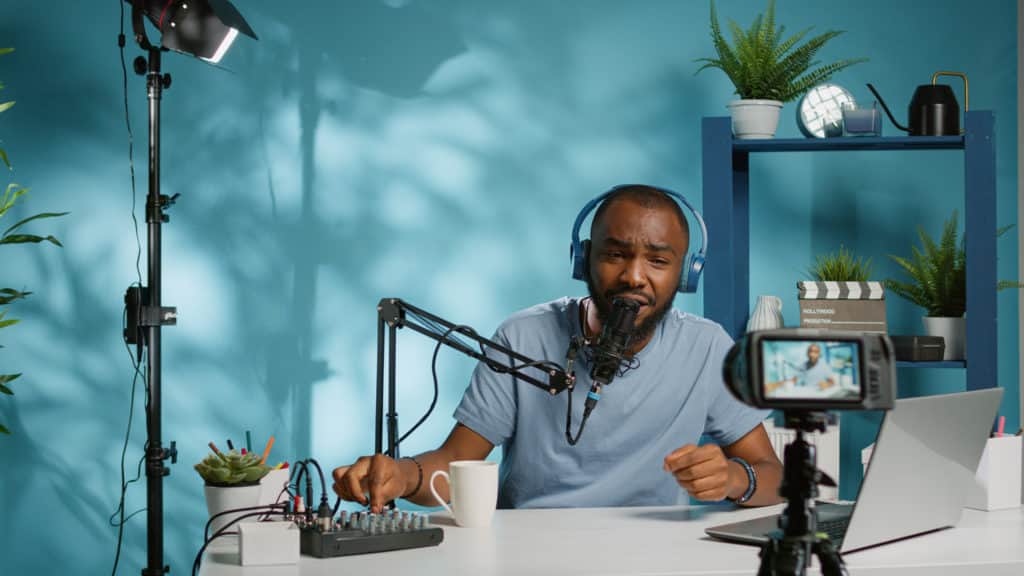[ad_1]
In the past 15 years, Podcasts have flourished. Today, there are more than 100,000 English language podcasts alone.
If you have thought about starting your own podcast, you’ll be pleased to know that it’s never been easier. But before you take the plunge into sharing your knowledge with your local community – or beyond – there are a few things you need to consider.
Here’s a quick primer on four things – as a real estate agent – you will need to know:
1. Podcasts take time to record, edit, distribute, and promote. The first step in creating a podcast is asking yourself how much time do you have? Professional podcasts often involve a team, so you need to understand the time commitment required if you are doing this solo.
Generally, there are two kinds of podcasts: serial and evergreen. A regular podcast – once a week or once a month – is a series. A series can take an enormous amount of time and commitment to produce.
You don’t want to spend the time it takes to produce and distribute your first episode to have it be the only one you ever create. It’s akin to starting a blog on your website and winding up with just a few posts.
Most active agents don’t have time for a serial podcast and instead create an evergreen podcast. They are called “evergreen” because the subject matter is timeless.
The real estate business is filled with evergreen topics, such as Top 5 mistakes buyers make, 4 things not to miss when getting your home ready to sell, How to choose a real estate agent, What the internet won’t tell you about local real estate, and so forth.
But an evergreen podcast doesn’t necessarily have to be centered on your real estate business. You also can share your expertise about your community.
For example, you could create a podcast about the Top 5 things they can discover in your community, such as the Top 5 Picnic Places, Top 5 Parks, Top 5 Instagram Spots, etc. The key to a successful evergreen podcast is to think about how you can share your expertise with others.
2. Tools of the trade. Online shops like Amazon makes this part super simple. Assuming you are creating solely audio and not recording video for your podcast, you’ll need just a few extra tools. If you have a newer smartphone (i.e., iPhone, Samsung, or another top model), you have all the audio recording software you’ll need built right in.
More importantly, smartphones accept external microphones. Sites like Amazon will tell you which mics are compatible with your model.
Most microphones that plug into a smartphone are either omnidirectional or unidirectional (also known as cardioid). Omnidirectional mics pick up equally well in all directions. Unidirectional or cardioid mics are designed only to pick up your voice.
The best choice for podcast recording when you are the only voice that will be recorded (versus interviewing guests) is cardioid or unidirectional.
After you record on your smartphone’s built-in audio software, you will need to transfer the audio file to your computer for editing.
Audio recording software from firms like Adobe is excellent, but they are often expensive or require a subscription. Again, more good news here: there is a terrific free audio editing program that is easy to learn, has many user-created how-to videos on the web, and is free. Audacity works with just about every type of computer and is terrific for creating your first podcast.
If you want to add music to give your podcast a unique signature, add introductory music. Today, there are many ways to obtain free music: just Google “free music licensing sites” or use a low-cost service such as Audio Jungle, now called Envato Music.
Adding a sound clip to start and end your podcast makes it sound more professional. In addition, Audacity makes it easy to combine music with the voice track you recorded on your phone.
Remember that editing takes time, especially when you are a newbie. Even for experienced editors, 1 minute of finetuning and editing an audio file can take as much as one hour. So keep your evergreen podcast content short – five minutes or less – if you are starting out.
You also can use Audacity to take out your uhs, ums, and repeated words, and fix other recording glitches. If you get stuck and don’t know how to do something, Google what you are trying to do with Audacity, and you are likely to find a step-by-step video showing you how to do it. Best of all, you can easily export your finished file as an mp3, the audio format you’ll need to distribute your podcast.
The final artistic element you need will be cover art to accompany your podcast. If you don’t have Photoshop skills or are unfamiliar with the do-it-yourself art site Canva, you can hire someone to create low-cost cover art for your podcast at Fivver.com.
3. Podcast distribution services. You could host your podcast and then go to each podcast outlet, from Apple to Google to Spotify or others, to distribute your podcast. But that would be one service at a time and a terrible use of your time.
Instead, invest in a turnkey podcast distribution service, and you’ll set your podcast up once, and it appears everywhere. A great example is Simplecast. For $15 (Basic) or $35 (Essential) a month, this service is an agent’s best friend for podcast management.
Podcast services like Simplecast host your podcast, distribute it everywhere, and provides you analytics to see the usage of your podcast. It walks you through all the steps you need to take – from setting up and connecting an Apple account if you want to be on Apple Podcast to a dashboard that lets you control the name, cover art, and description of your podcasts and its episodes.
4. Promoting your podcast. The final step in your podcast journey is getting people to listen to it. Fortunately, social media is an excellent, low-cost, high-impact way to promote your local podcast.
Using a distribution service like Simplecast will give your podcast significant exposure by being searchable on all the major podcast sites. In addition, these sites often promote new podcasts and episodes.
But the most important thing you can do, as an agent with a new podcast, is to market your podcast like how you sell a property. Tell your sphere about it: promote it in your newsletter, add a link below your email signature, create social media posts, and spend money to boost them.
Treating your podcast as a new listing will drive awareness, and if your podcast has good content that connects with your target audience, it will be successful.
As you can see, even with an evergreen podcast, it takes a significant time commitment. But if you do have great content and are willing to put in the time, an evergreen podcast can help you build awareness and new business for you and your brand for years to come.
Remember, if any of this technology trips you up, reach out to an expert at Tech Helpline and get back on track!
[ad_2]


